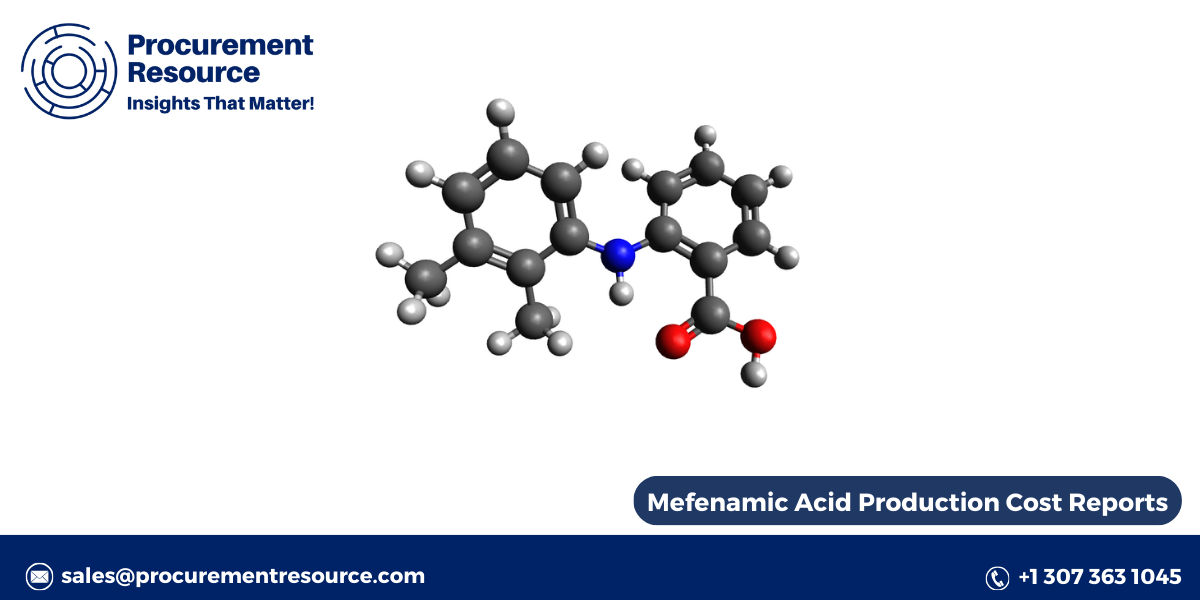
Mefenamic acid is a nonsteroidal anti-inflammatory drug (NSAID) commonly used for pain relief and management of inflammation. Known for its efficacy in treating menstrual pain, toothaches, and various other forms of mild to moderate pain, mefenamic acid has become a widely utilized medication in both clinical and over-the-counter settings. This guide covers the uses, side effects, and production process of mefenamic acid, including a detailed production chart to help visualize each step.
Uses of Mefenamic Acid
- Pain Relief: Mefenamic acid is primarily prescribed for pain management. Its anti-inflammatory properties make it effective for alleviating mild to moderate pain caused by headaches, toothaches, muscular pain, and more.
- Menstrual Cramps: Mefenamic acid is particularly effective in reducing pain associated with dysmenorrhea (menstrual cramps), making it a popular choice among healthcare providers.
- Arthritis and Joint Pain: It can also be used to treat inflammation and pain in joints and muscles for patients with conditions like osteoarthritis and rheumatoid arthritis.
- Fever Reduction: In some cases, mefenamic acid is used to reduce fever when other NSAIDs are not suitable.
Request For Sample: https://www.procurementresource.com/production-cost-report-store/mefenamic-acid/request-sample
Mefenamic Acid Side Effects
As with most NSAIDs, mefenamic acid can cause side effects. While not everyone experiences adverse effects, it is essential to be aware of the potential risks. Common side effects include:
- Gastrointestinal Issues: These can include nausea, vomiting, diarrhea, and abdominal pain. Prolonged use may increase the risk of developing ulcers or gastrointestinal bleeding.
- Headaches and Dizziness: Some individuals may experience headaches, dizziness, or drowsiness, which can affect their ability to perform tasks requiring alertness.
- Allergic Reactions: Although rare, some individuals may experience rashes, itching, or swelling as an allergic response to the medication.
- Kidney and Liver Issues: Long-term or high-dose usage can put stress on the kidneys and liver, potentially leading to damage if not monitored.
- Heart Risks: There may be an increased risk of heart-related issues, such as hypertension or heart attack, especially if the medication is taken for an extended period.
It’s important for patients to consult with a healthcare provider to understand their risks and to ensure the safe use of mefenamic acid, especially if they have pre-existing health conditions.
Mefenamic Acid Production Process
The production of mefenamic acid involves several stages, from raw material procurement to the final synthesis of the active pharmaceutical ingredient (API). Below is an outline of the process, including a simplified production chart.
Key Stages of Mefenamic Acid Production:
- Raw Material Preparation:
- The primary raw materials required are anthranilic acid and isocyanate derivatives.
- These materials are purified to ensure that they meet pharmaceutical-grade standards.
- Reaction and Synthesis:
- The raw materials undergo a series of chemical reactions, typically including nitration and reduction, to convert anthranilic acid into mefenamic acid.
- Catalysts are used in the reactions to enhance efficiency and yield.
- Purification:
- Once synthesized, the mefenamic acid undergoes purification stages to eliminate impurities and by-products.
- Techniques like crystallization or recrystallization are applied to improve the purity level of the acid.
- Drying and Milling:
- The purified mefenamic acid is then dried to remove any residual solvents and further processed to achieve the desired particle size.
- Milling helps achieve a consistent granule size, essential for the formulation process.
- Quality Control and Testing:
- Rigorous quality control measures are implemented to ensure the final product meets pharmacopoeial standards.
- Analytical techniques, such as high-performance liquid chromatography (HPLC), are used to verify the purity and potency.
- Packaging:
- Once verified, the final product is packaged in a controlled environment to ensure stability and quality preservation.
Simplified Production Chart
Below is a simplified representation of the mefenamic acid production process:
| Step | Process | Description |
|---|---|---|
| 1. Raw Material Prep | Procurement & Purification | Ensures quality of anthranilic acid and derivatives |
| 2. Reaction & Synthesis | Nitration & Reduction | Converts anthranilic acid to mefenamic acid |
| 3. Purification | Crystallization | Enhances purity by removing impurities |
| 4. Drying & Milling | Drying and particle size reduction | Prepares the product for formulation |
| 5. Quality Control | HPLC and Other Testing | Ensures the final product meets standards |
| 6. Packaging | Controlled Environment Packaging | Final product is packaged for distribution |
The production of mefenamic acid is a carefully controlled process designed to meet pharmaceutical standards while ensuring safety and efficacy. Mefenamic acid remains a valuable medication for managing various types of pain and inflammation, although patients should be aware of its potential side effects. By understanding the uses, side effects, and production process, consumers and healthcare professionals can make informed decisions about mefenamic acid’s role in healthcare.
Contact Us:
Company Name: Procurement Resource
Contact Person: Endru Smith
Email: sales@procurementresource.com
Toll-Free Number: USA & Canada - Phone no: +1 307 363 1045 | UK - Phone no: +44 7537 132103 | Asia-Pacific (APAC) - Phone no: +91 1203185500
Address: 30 North Gould Street, Sheridan, WY 82801, USA






